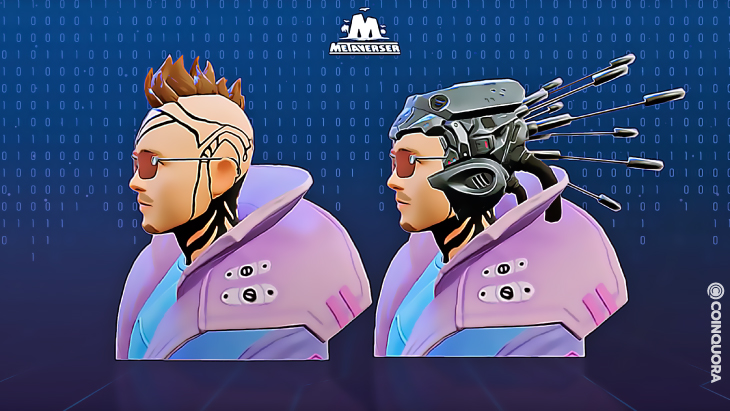- Gamers are now transcending borders and cultural specificities to forge robust communities in digital spaces.
- Some metaverse games adopt a decentralized governance infrastructure based on a liquid democracy model.
- Metaverser, a metaverse platform on the Binance Smart Chain, optimizes what blockchain technology can offer.
The metaverse is expanding rapidly, with an estimated $800 billion revenue generation opportunity by 2024. The gaming industry is the primary driving force in this regard, eyeing a projected $413 billion market share in 2024.
The primary reason why metaverse gaming is so appealing is that it offers several benefits over traditional gaming titles. There’s a rich on offer, plus there are lucrative returns.
Innovative metaverse-based games bring together players from around the world in an immersive virtual ecosystem. Unlike Web2 gaming, the metaverse curates a graphics-intensive, dynamic experiential environment for gamers to socialize and compete against each other.
Gamers are now transcending borders and cultural specificities to forge robust communities in digital spaces. They are also participating in gaming economies with novel monetization opportunities and revenue streams. Moreover, leveraging NFT technology, players can store their in-game assets on the blockchain and trade them in secondary marketplaces. Thus, gamers tokenize in-game items like skins, weapons, and racing cars to infuse them with real-world economic value.
Additionally, on-chain immutability and cryptography help users indisputably prove ownership of their gaming assets. This improves asset provenance, enabling players to genuinely own their skills and in-game valuables. The traditional risks of de-platforming, censorship, etc., are also minimal. It also enhances security and accountability for all stakeholders, reducing the chances of forgery and duplication.
Some metaverse games adopt a decentralized governance infrastructure based on a liquid democracy model. Those who own in-game tokens can directly participate in decision-making by voting on protocol upgrades and shaping the future trajectory. Thus, the globally-distributed gamers’ community owns metaverse games rather than some centralized corporations. Rules emerge by consensus, not by imposition.
Metaverse games can also become a novel source of income since they reward users financially for pursuing digital gaming activities. The Play-to-Earn (P2E) model allows gamers to earn cryptocurrencies and NFTs, usable for in-game and real-world transactions. This has been tremendously impactful in the aftermath of COVID-19, helping Southeast Asians, among others, to balance and endure their livelihood loss.
Moreover, even non-gamers can join metaverse gaming ecosystems to participate in virtual business opportunities. For example, advertising is one of the most popular ways through which users become a part of gaming environments. They can put up digital billboards in gaming arenas or rent a space to advertise brands and earn revenue.
So much for the possibilities. Now, let’s look at one platform that’s taking metaverse gaming to the next level.
It’s Metaverser, a multiplayer blockchain game running on the Binance Smart Chain (BSC). The ecosystem combines all the features mentioned above, offering lucrative P2E opportunities to gamers worldwide. They can participate in racing leagues, gun fights, and weekly or monthly challenges to win cryptos and NFTs.
Additionally, non-gamers can earn from the platform by renting out NFTs to other players in return for a percentage of fees. They can also set up digital mines in their houses for mining the in-game MTVT tokens. They can invest in energy-producing industries like wind farms and solar plants to generate electricity for in-game mining. Developing transportation facilities and grocery stores are also possible. Advertisers can generate income by renting their spaces out to brands.
Metaverser leveragesUnity andMirror Networking APIs to offer an immersive gaming experience. Unity’s cross-platform compatibility allows the game to run seamlessly on Android, iOS, Windows, PlayStation, and WebGL. The protocol also uses Mediapipe and OpenCV to develop highly authentic 3D avatars by mapping 468 face points.
The MTVT token fuels Metaverser. Its owners gain voting rights in the Metaverser DAO. Moreover, $MTVT holders select people for the Curation Committee and vote on in-game upgrades. The token also allows users to store personal information on EOS, besides creating custom assets using IPFS.
Thanks to their user-friendly and community-oriented nature, platforms like Metaverser are crucial to the sustainable growth of blockchain gaming. By offering multiple solutions under one hood, they help unlock the domain’s full potential. This paves the way for mass adoption, onboarding new users at scale to propel the industry towards a promising future.


